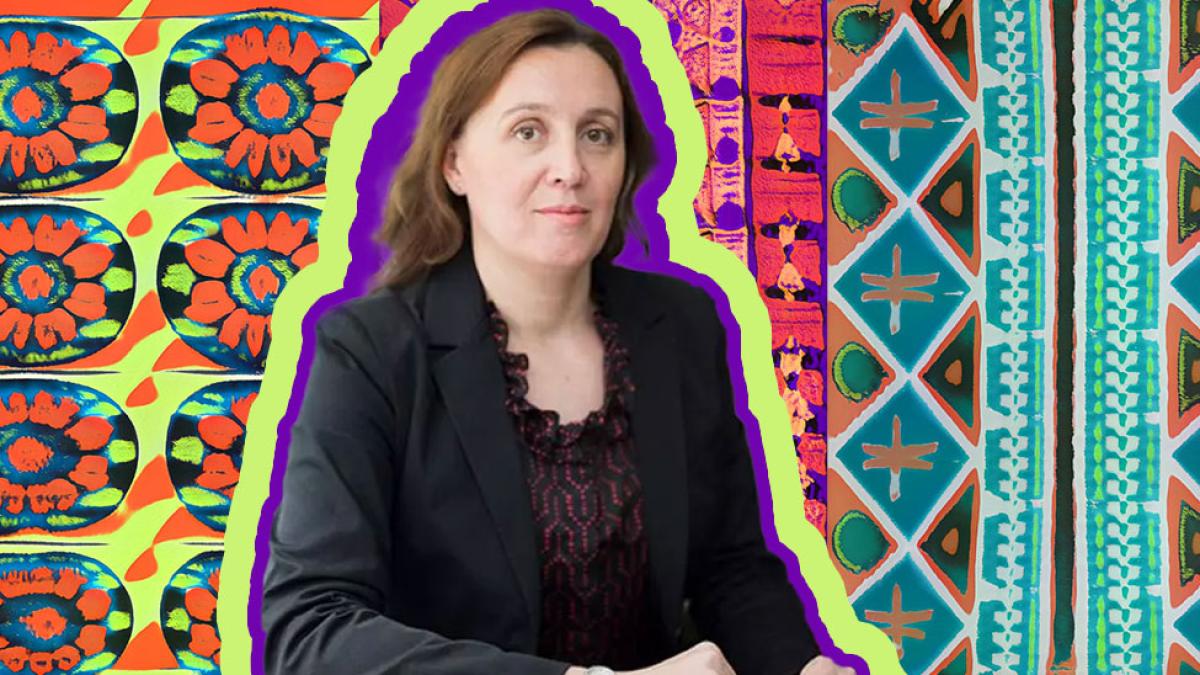Juan Shan, PhD, an associate professor of computer science in Seidenberg, is focused on applying artificial intelligence and machine learning to analyzing medical imaging
Justice, equity, sustainability, and beauty: building a better world with human-centered design

The future is human centered—and new Seidenberg faculty member Jonathan Williams knows it. One of the latest additions to the expert faculty roster teaching in the MS in Human Centered Design, Professor Williams brings his unique background in design, problem solving, and knot tying (yes, knot tying) to draw out the interdisciplinary nature of the program, which blends art, design, and psychology with technology.
We asked Professor Williams to share a little about himself and his fascinating background.
What is your background in terms of research, interests, academic pursuits?
My academic background is interdisciplinary, starting with my undergraduate degree in mathematical statistics. My master's degree is in design strategy and management and my current doctoral work is in the area of design studies with an emphasis on design education. Prior to beginning my teaching career, I spent time in the EdTech industry working on content design and development.
What brought you to Pace University?
Pace’s MS in Human Centered Design is a unique program that captures many of my own interests all in one degree program. The opportunity to teach in a program that takes a design centered approach while also being deeply concerned about technical competence and emerging technologies is a really exciting intellectual community to contribute to.
I believe that design is a process that can create change in the world. Students who are interested in co-creating with me and others to push the world to a future that is more just, sustainable, equitable, and beautiful will find a voice for their ideas in the classroom we create.
How are you finding working at Seidenberg so far? What classes are you teaching and how are they going?
Seidenberg has been an extremely welcoming community to me. My colleagues have been helpful at every turn and students have been engaged and ready to learn.
This semester I am teaching three courses at the graduate level: Introduction to Human Computer Interaction, Foundations of Social & Mobile Technologies, and Social & Collaborative Computing. I have designed all of my courses this semester so that each course focuses on a semester-long group project. Collaborative project-based learning is the core of instructional strategy for this set of courses.
To give you a glimpse into the classes, the Foundations of Social & Mobile Technologies students are developing concepts for mobile sites or applications that make a contribution towards one or more of the United Nations sustainable development goals. Social & Collaborative Computing students are getting ready to start an exercise in ethnographic fieldwork as they embed in social networks and virtual communities, and my Intro to HCI students have just wrapped up a series of mini-research tasks where they were applying concepts in usability research to real-world websites.
Who should take your classes, what should their interest areas be?
Students who are looking to create impact in the world will be right at home in my courses. I believe that design is a process that can create change in the world. Students who are interested in co-creating with me and others to push the world to a future that is more just, sustainable, equitable, and beautiful will find a voice for their ideas in the classroom we create. Interest in design (in the broadest sense of the term) is a great starting point but creative problem solvers should be at the front of the line!
What else are you interested in? Any cool projects you’d like to talk about?
This academic year I am working to wrap up my doctoral studies by writing my dissertation. My dissertation research is looking at how knot tying can be used in instructional settings to teach foundational principles of design to students who are beginning their study of design. As I have explored this topic over the last few years, I’ve become quite interested in physically making knots of all shapes, sizes, and patterns. Design has a unique disciplinary angle that can add to the current literature on knot tying and I am excited to reflect and build on this over the next few months as I write. I can’t wait to share my work once it’s done.
And what else would you like to share?
When I’m not preparing for class or researching, you’re likely to find me at a museum in the city or at the theater. I get lots of inspiration from many great museum collections in the city and the theater never fails to captivate the imagination!
More from Pace
Meet Christelle Scharff, PhD, a computer science expert focusing on the limitations and biases of AI systems. She and her team are tackling the intersection of AI and African fashion to explore the impact of diverse datasets.
Seidenberg Professor Zhan Zhang recently made Pace history by earning grants from both the National Institutes of Health (NIH) and the National Science Foundation (NSF). In his ongoing NSF project, Zhan focused on enabling hands-free data collection and documentation in the field by emergency medical services (EMS) providers with an easy-to-use smart glass application.


